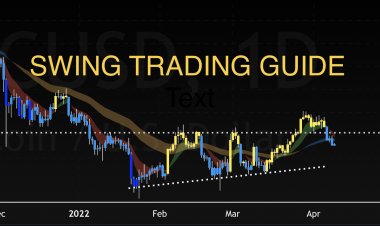What Is A Rolling Covered Call Option?
Options trading can be confusing for beginners, but rolling options is actually one of the easier trading strategies. Rolling over your options means that you sell your current option and replace it with a new option contract before expiration of the current option. The key to rolling options successfully is understanding how to maximize the premium received every week for call and put options. This can make a huge difference for traders future performance long term.

1. Is rolling options for you?
Unfortunately, rolling options are not for everyone. People who have a low-risk tolerance and do not want to take on the chances of losing their stock maybe someone who does not prefer rolling options. Failing stock could result in paying unwanted taxes on the precious long-term profit. Rolling also incurs commissions, so it could add up over time if you are doing it often.
But overall, most people prefer integrating this into their portfolios. However, Rolling options is an essential skill for any trader. Rolling covered calls allows traders to continue making income on your current position and possibly reduce the chance of losing your stock in the process. This can be done through bullish, neutral, and even bearish rolling strategies depending on what type of market or strategy you are trading against, which we will review in this blog.
2. What are the different options to roll and how to execute the order?
There are two types of rolling options: rolling covered calls and rolling a put option.
Rolling options are when you buy your current option to close the current position before expiration and purchase a new position by selling an option with a later expiration date on the same stock. Again, the strike prices do not have to be the same, and we will talk about the differences later.
This can be seen in the example below, where the brokerage simplified this whole transaction into one order. If you look at the expiration dates, you can see that the shorter expiration has a +3 C (which means buying three contracts to close), and the further expiration has a -3C (which means selling three contracts to open). By adding more time to the covered call in the portfolio, the net premium of the two options is much higher from the time decay.
3. Why covered calls or cash secured puts?
It is essential to understand what it provides to the trader when rolling an option position.
Rolling a call option is done to continue to protect a stock investment or generate income from it. Most traders will choose a higher strike price than the current market price. The closer the covered call strike is to the stock's price, the more defensive a position and the more premium (or income) that can be collected. Conversely, the further away the covered call strike price is from the stock, the less defensive a trader is and more likely they are to keep the stock.
Rolling a put option is done when a trader is still bullish on a stock, wants to acquire the stock at a possible discount, or wants to collect potential passive income. Like the covered call strike prices, the closer the cash secured put strike price is to the current stock price, the more premium possible to collect.
4. Ways to roll a covered call
There are multiple ways to roll a covered call shown in the examples below.
Bearish Roll (Lower Strike Price)
This first roll is used as a bearish strategy. In this, traders will "roll down," which involves purchasing your current options contracts and selling an option with a lower strike price but further expiration date. This has a bearish outlook that will generate more income for the trader than the other types of rolls and lower the downside risk if the stock should decline before expiration. For example, in the image above, let's say you currently have a 469 strike covered call and want to perform a bearish roll. Looking at the chart above, you would sell a call beneath 469. Each strike lower and lower provides a higher premium and increases the chance of losing the stock, which we will talk about soon.
Bullish Roll (Higher Strike Price)
The second example is the rolling up strategy where you buy your current option and sell an option with a higher strike price but further expiration date. This will generate less income for the trader than the other types of rolls and a higher downside risk if the stock price drops before expiration. For example, in the image above, let's say you currently have a 469 strike covered call and want to perform a bullish roll. Looking at the chart above, you would sell a call above 469. Each strike higher provides a lower premium and decreases the chance of losing the stock, which we will talk about soon.
Neutral Roll (Equal Strike Price)
The third is the rolling up strategy, where you buy your current short position contract and sell an option with an equal strike price but further expiration date. This will generate average income for the trader compared to the other types of rolls. In the example above, let's say you currently have a 469 strike covered call and want to perform a neutral roll. Looking at the chart above, you would sell another call at 469.
In the Money Roll
Lastly, the money roll strategy is where you purchase your current option for a loss. For example, this covered call could be "in the money" and sell an option with a higher strike price but extend the expiration date. This is a strategy where investors will avoid losing their stock and avoid taking a loss on the current option they are holding by gaining more premium to short in the future. This can be seen in the example below, where the price of the SPY is currently 468. The current roll of purchasing the 466 in the money option and shorting the 469 option five days late allows the trader to receive a very similar premium but not the ability to hold an option out of the money. This will enable them to avoid losing the stock and still have a chance to collect the premium in the future.
5. The risks of rolling options
When rolling an option, you are taking on the risk of losing the stock.
Covered Call Risks
This can happen if the underlying stock price rises above the strike price of the new option sold for a covered call. In this case, your call would be "in-the-money," If it expires, you will lose your stock at expiration. Luckily, there are defined risks of this happening through your brokerage, as you can see below on Robinhood. As you can see in the example below, the chance of profit ranges between 66-69% for these two strike prices. This means losing the stock positions is around 31-34%.
Cash Secured Puts Risks
This can happen if the underlying stock price falls beneath the strike price of the new option sold for a cash-secured put. In this case, your call would be "in-the-money," If it expires, you will buy your stock at expiration.
6. Premium lost on the existing position
Rolling options give up the premium of the current option you are holding. These options are typically close to expiration, which means they can be collected relatively quickly. Rolling any option to further expiration date will replace a faster decay option in your portfolio with a slower decaying option. Which means you do not collect income as quickly. But there are scenarios where this makes a lot of sense to do.
Conclusion and Key Takeaways
"What's the difference between a covered call and cash secured put?" A covered call is an options strategy that requires you to own 100 shares of the underlying asset per contract. If your contract expires, you must sell the underlying security at the strike price to fulfill obligations under this agreement. An investor has a considerable risk if they don't have the capital necessary to sell an option.
Options should never be sold on margin or "naked" because they could result in substantial financial losses. When it comes to options trading, we've learned from our experience with our traders that there are significant risks when buying or selling stocks because of market volatility. However, rolling options allow you to possibly generate income while limiting the downside risk of holding or buying the stock. Thanks again for reading!
Trade with us!
Looking for a more sophisticated and educational options trading experience, look no further than "Market Moves Premium Options Trading Group." Our exclusive 7-day membership offers swing trading set-ups, fast text signals, and +100 hours of educational content. Plus, you'll have access to live trading sessions twice per day. So if you're ready to take your options trading to the next level, join us today!
Financial Disclaimer: Market Moves LLC is a company that provides education in financial and stock market literacy. WE ARE NOT FINANCIAL ADVISORS. It is illegal for us to provide any financial advice to you. Under U.S. law, the only persons who can give you financial advice are those who are licensed financial advisors through the SEC. Results shown from Market Moves LLC or customers who use our product and/or service are individual experiences, reflecting real-life experiences. These are individual results, and results do vary. Market Moves LLC does not claim that they are typical results that consumers will generally achieve. Past performance does not guarantee future results. You should not rely on any past performance as a guarantee of future investment performance













![Webull Paper Trading Options [Complete Guide!]](http://tradewithmarketmoves.com/uploads/images/2022/05/image_380x226_6272b567442d8.jpg)





![8 Single Stock Leveraged ETFs [Brand New]](http://tradewithmarketmoves.com/uploads/images/2022/09/image_380x226_63135e79c0e8f.jpg)